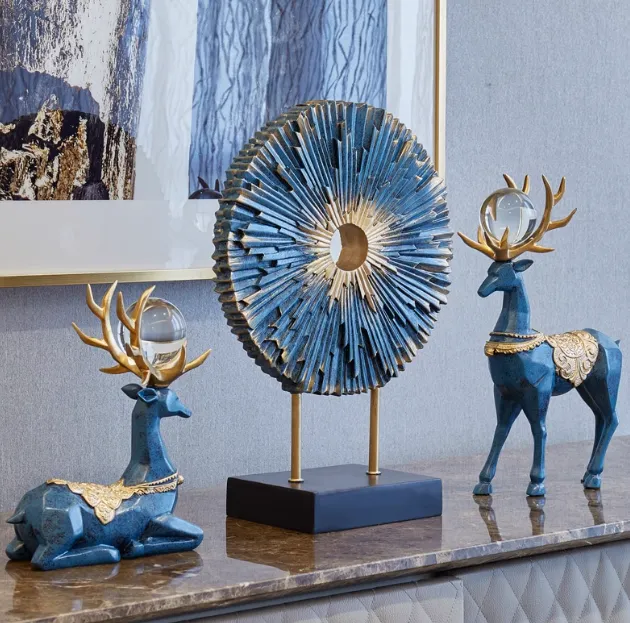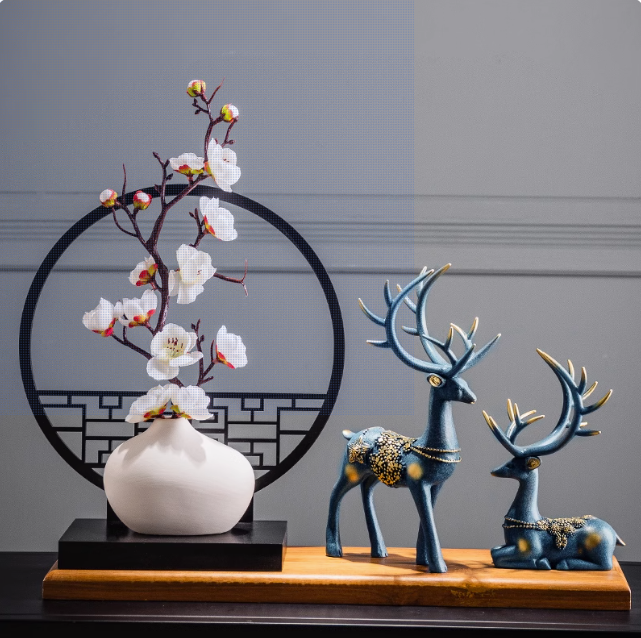Maximizing the Beauty of Collectible Figurines Through Strategic Display
Polyresin toys have become increasingly popular among collectors and enthusiasts for their intricate details, durability, and stunning aesthetics. These masterfully crafted pieces deserve to be showcased in ways that highlight their unique characteristics and preserve their beauty for years to come. Whether you're a seasoned collector or just beginning your journey into the world of polyresin toys, proper display techniques can transform your collection from merely impressive to absolutely breathtaking.
The art of displaying polyresin toys goes beyond simply placing them on a shelf. It involves careful consideration of lighting, positioning, and environmental factors that can either enhance or detract from their visual appeal. By understanding the fundamental principles of display and implementing professional techniques, you can create an eye-catching presentation that does justice to these remarkable collectibles.
Essential Display Environment Considerations
Optimal Lighting Solutions
The right lighting can dramatically enhance the appearance of polyresin toys, bringing out their subtle details and color variations. LED lighting systems offer several advantages, including minimal heat emission, which is crucial for preserving the integrity of the polyresin material. Consider installing adjustable spotlights or LED strips that allow you to control the direction and intensity of light falling on your collection.
Natural lighting can also work wonders, but it's important to avoid direct sunlight, which can cause fading and potential damage to polyresin toys over time. Diffused natural light through sheer curtains or strategically placed display cases can create a soft, flattering illumination that showcases your pieces without risking deterioration.
Temperature and Humidity Management
Maintaining stable environmental conditions is crucial for the longevity of polyresin toys. The ideal temperature range falls between 65-75°F (18-24°C), with relative humidity levels between 45-55%. Extreme fluctuations in either temperature or humidity can lead to material stress and potential damage to your collectibles.
Installing a climate control system or using dehumidifiers in your display area can help maintain optimal conditions. Regular monitoring with a thermometer and hygrometer ensures your collection remains in a stable environment year-round.
Professional Display Techniques
Elevation and Positioning Strategies
Creating visual interest through varying heights and depths can transform a simple display into an engaging presentation. Use acrylic risers, custom-built platforms, or tiered display stands to create different levels within your collection. This not only maximizes space but also ensures each piece receives proper visibility and attention.
When positioning polyresin toys, consider their best angles and unique features. Rotate pieces periodically to prevent dust accumulation on specific areas and to provide different viewing perspectives for appreciation. Strategic positioning can also create interesting shadow effects that enhance the overall visual impact of your display.
Display Case Selection and Setup
Investing in quality display cases protects polyresin toys while showcasing them effectively. Glass or acrylic cases with proper ventilation prevent dust accumulation while maintaining optimal viewing conditions. Choose cases with adjustable shelving to accommodate pieces of different sizes and configurations.
Consider the background color and material of your display case interior. Neutral tones like white, black, or gray typically work best as they don't compete with the colors of your polyresin toys. Some collectors use mirrored backs to create depth and allow viewing from multiple angles.
Creative Arrangement Concepts
Thematic Grouping Methods
Organize polyresin toys by themes, series, or artistic styles to create cohesive visual stories. This approach not only makes your display more engaging but also helps viewers appreciate the relationships between different pieces. Consider factors like color harmony, scale relationships, and narrative connections when grouping items together.
Seasonal rotation of displays can keep your collection fresh and interesting. Creating themed arrangements that correspond to holidays or special occasions adds an element of excitement and gives you regular opportunities to handle and assess the condition of your pieces.
Spatial Balance Techniques
Understanding basic design principles like balance, symmetry, and negative space can elevate your display from good to exceptional. Leave adequate breathing room between pieces to prevent visual cluttering and allow each item to stand out. Consider the visual weight of different pieces and distribute them evenly across your display area.
Use the rule of thirds and other composition techniques to create visually pleasing arrangements. This might mean grouping pieces in odd numbers or creating focal points that draw the eye through the display in a natural flow.

Maintenance and Preservation Practices
Regular Cleaning Procedures
Proper cleaning is essential for maintaining the visual appeal of polyresin toys. Use soft, lint-free cloths or specialized dusting tools to remove surface dust regularly. Avoid using harsh chemicals or excessive moisture, as these can damage the polyresin finish. A light dusting once or twice a week is usually sufficient for maintaining appearance.
When deeper cleaning is necessary, use only products specifically approved for polyresin materials. Always test cleaning solutions on a small, inconspicuous area first, and never submerge polyresin toys in water or cleaning solutions.
Protection Against Environmental Factors
Shield your collection from potentially harmful environmental elements. UV-protective display cases or window films can prevent sun damage, while proper air filtration systems reduce dust accumulation. Regular inspection of your display area for potential issues like water leaks or pest problems helps ensure long-term preservation.
Consider using archival-quality materials in your display construction to prevent chemical interactions that could affect your polyresin toys over time. This includes choosing appropriate backing materials and avoiding adhesives or materials that could off-gas harmful compounds.
Frequently Asked Questions
How often should I clean my polyresin toy display?
Light dusting should be performed weekly using a soft, dry cloth or specialized dusting tool. Deep cleaning may be necessary every 3-6 months, depending on environmental conditions and visible dirt accumulation.
What is the best lighting for displaying polyresin toys?
LED lighting is ideal as it produces minimal heat and can be adjusted for intensity and direction. Avoid direct sunlight or high-intensity halogen lights that could potentially damage the material over time.
Can I display polyresin toys outdoors?
It's not recommended to display polyresin toys outdoors as they can be damaged by weather conditions, UV exposure, and temperature fluctuations. Indoor display in a controlled environment is best for long-term preservation.
How should I handle polyresin toys when rearranging displays?
Always handle polyresin toys with clean, dry hands or wear cotton gloves. Support the piece from its base rather than grabbing protruding parts, and avoid applying pressure to delicate areas when moving or cleaning.
